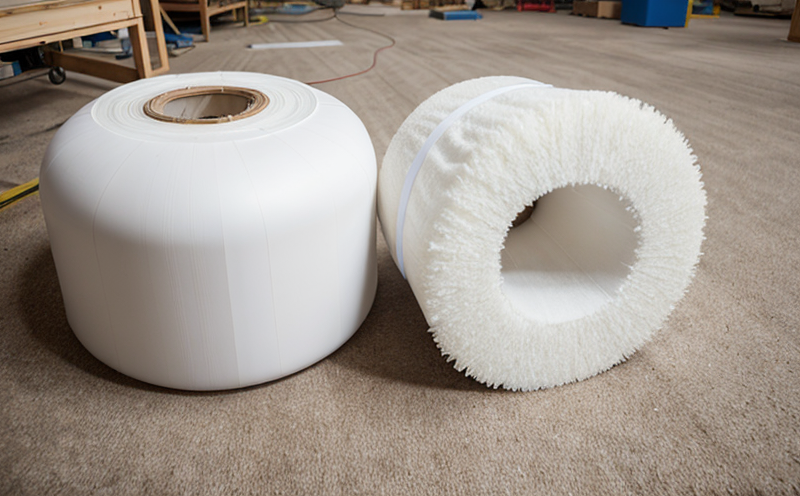ASTM E413 Sound Transmission Class (STC) Testing
The ASTM E413 standard provides a method for determining the sound insulation properties of building materials and assemblies. This service is critical in ensuring that walls, partitions, floors, and other elements provide sufficient sound transmission control to meet noise regulations and design specifications. In sectors such as residential construction, commercial buildings, and industrial facilities, achieving compliance with acoustic standards not only ensures a comfortable working environment but also contributes to overall building performance.
The Sound Transmission Class (STC) rating is determined by the reduction in sound energy transmitted through the test specimen. It is measured in decibels (dB) and indicates how effectively materials can block sound. STC testing is essential for developers, architects, and engineers to ensure that their designs meet regulatory requirements and client expectations.
The ASTM E413 method involves placing a standardized sound source on one side of the specimen and measuring the sound pressure level at the receiving side using microphones. The difference between these levels determines the STC value for the material or assembly. This process is conducted in anechoic chambers to ensure accurate measurements.
For our clients, we offer comprehensive ASTM E413 testing services that include:
- Preparation of specimens according to specific dimensions and orientation
- Conduction of tests in controlled acoustic environments
- Data collection and analysis using advanced acoustic equipment
- Generation of detailed reports with STC ratings
The results from our testing are used not only for regulatory compliance but also to improve product design. By providing precise data on sound transmission, we help clients make informed decisions that enhance the acoustical performance of their products and environments.
| Applied Standards | Description |
|---|---|
| ASTM E413-17 | The standard test method for determining the sound insulation of building materials and assemblies using a single-field, steady-state technique. |
| ISO 140-8:2009 | An international standard that specifies procedures to measure the airborne sound transmission loss of building elements. |
| EN ISO 140-8:2005 | The European equivalent, ensuring compatibility with other EU standards and regulations. |
| IEC 60318:2010 | A standard for the measurement of sound pressure in the vicinity of noise sources. |
The ASTM E413 Sound Transmission Class (STC) Testing is a critical service that ensures compliance with international and national acoustic standards. By providing accurate STC ratings, we help clients achieve regulatory requirements while also enhancing the acoustical performance of their products.
Quality and Reliability Assurance
To ensure the reliability and accuracy of our ASTM E413 Sound Transmission Class (STC) Testing, we implement several quality control measures:
- Calibration of Equipment: All acoustic equipment is regularly calibrated to ensure precise measurements.
- Standard Operating Procedures: Our technicians follow strict protocols to ensure consistent and accurate testing results.
- Environmental Control: Tests are conducted in controlled environments to minimize external variables that could affect the outcome.
- Data Validation: Data is cross-checked with industry standards to confirm accuracy and reliability.
- Certification of Personnel: Our staff undergo continuous training and certification to ensure they are up-to-date with the latest testing methods.
Our commitment to quality ensures that our clients receive reliable and accurate STC ratings that meet both domestic and international standards. This is crucial for ensuring compliance with building codes and regulations.
Competitive Advantage and Market Impact
The ability to accurately measure and report the Sound Transmission Class (STC) of materials is a key differentiator in our services. By offering comprehensive ASTM E413 testing, we help clients:
- Achieve Regulatory Compliance: Ensuring that all building elements meet strict noise control regulations.
- Enhance Product Performance: By identifying the strengths and weaknesses of materials through detailed testing.
- Increase Client Satisfaction: Providing accurate data to help clients make informed decisions about their products.
- Promote Innovation: Encouraging continuous improvement in product design and performance.
The results from our testing are widely recognized by industry professionals, architects, and engineers. Our clients benefit not only from regulatory compliance but also from enhanced brand reputation and increased market competitiveness.





